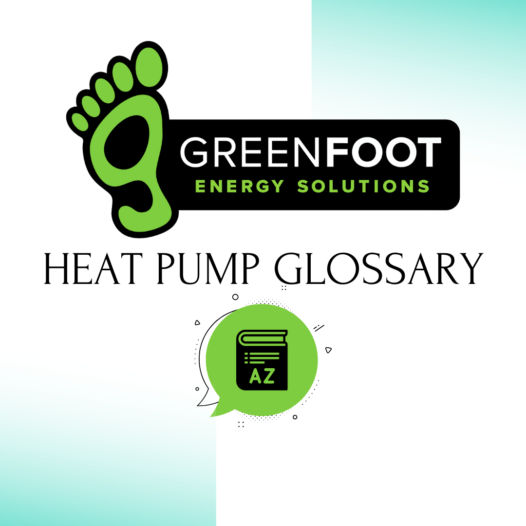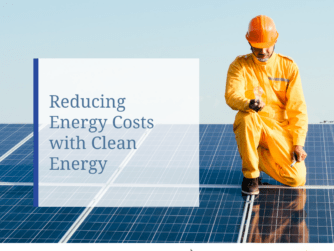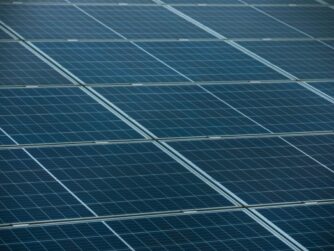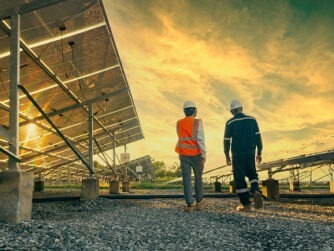A
Air Handler: The indoor component of a heating and cooling system that circulates air throughout a building.
Air Source: A type of heat pump that extracts heat from the air and transfers it elsewhere to raise or lower the temperature of a space.
Air to Air: A variety of air source heat pump that collects heat from external air and deposits it into the air in an indoor space that needs to be heated, or collects heat from indoor air and disposes of it outside to cool an indoor space.
Air to Water: A variety of air source heat pump in which a direct action outdoor unit is combined with an indirect indoor system such as radiators. It collects heat from external air and transfers to water to provide heat through a radiant heating system.
B
British Thermal Unit (BTU): A unit of measurement that refers to the amount of heat necessary to raise the temperature of one pound of water by one degree Fahrenheit. One BTU equals roughly 1,055 joules of energy. BTU is used to measure the output of heat pumps and other HVAC systems.
C
Cubic Feet Per Minute (CFM): A unit of measurement that determines airflow volume based on how many cubic feet of air pass by a non-moving point in one minute.
Carbon Footprint: The total amount of greenhouse gas emissions created by an individual, organization, event, service, or product—such as a heating system—expressed by carbon dioxide equivalent.
Closed Loop: A type of geothermal heat pump that cycles a mixture of water and antifreeze through a closed loop of pipe buried in the ground to collect heat.
Cold-Climate Heat Pump (CCHP): Unlike conventional air-source heat pumps, a cold-climate heat pump uses an inverter, or variable speed drive, that makes it capable of efficiently heating homes in colder climates with temperatures that get down to approximately -25 degrees Celsius.
Compressor: Located in the outdoor unit of a heat pump, the compressor maintains the flow of refrigerant through the unit and compresses liquid refrigerant into a hot gas, which is then moved to the condenser coil for cooling or the evaporator coil for heating.
Condenser Coil: A component of a heat pump’s outdoor compressor unit that works in tandem with the evaporator coil inside indoor units, such as the air handler or blower compartment, to cool an indoor space. It receives refrigerant in the form of hot gas from the compressor and cools it into a warm liquid, which is then moved to the evaporator coil where it expands and cools.
Coefficient of Performance (CoP): A ratio that expresses the output of a heating unit in relation to the input of energy. It is the rated capacity of the machine divided by its rated power input, though it can be expressed as a single figure or percentage.
D
Damper: A device that opens and closes to regulate how much air flows through vents, or ducts in a ducted heat pump system.
Direct Expansion Heat Pump (DX): A type of geothermal ground-source heat pump in which refrigerant circulates through a pipe buried in the ground to collect thermal energy, unlike other closed loop systems that circulate a mixture of water and antifreeze.
Drain Pan Heater: An add-on unit that consists mainly of a heating element. It can be added to the outdoor condenser unit of a heat pump in a cold climate to warm the drain pan, so ice does not form in the drain pan or at the base of the condenser unit.
Ducted Heat Pump: Also referred to as a central heat pump or a forced air system, it connects to ductwork inside walls and ceilings and uses the ducts to move warm or cool air throughout a building.
Ductless Heat Pump: Also referred to as a mini-split, it uses air handlers connected to an outdoor compressor unit to control the temperature of individual rooms.
E
Efficiency Rating: A ratio that measures the efficiency of a heat pump. Annual heating efficiency is measured by HSPF, while annual cooling efficiency is measured by SEER.
Energy Star: A program run jointly by the U.S. Department of Energy and the U.S. Environmental Protection Agency to promote energy efficiency. The Energy Star logo is a symbol of certification for buildings and consumer products, such as appliances and heating systems, that meet certain standards of energy efficiency.
Evaporator Coil: A component of the air handler that works together with the outdoor unit’s condenser coil to complete the heat transfer cycle. When a heat pump is in cooling mode, warm air inside the room is transferred to the refrigerant in the evaporator coil to cool the air, and the refrigerant moves to the condenser coil outside to cool down. In heating mode, the heat from the refrigerant is expelled into the room to warm it up instead of moving outside.
Electronic Expansion Valve (EEV): Unlike a conventional thermostatic expansion valve that is controlled by springs, bellows, and push rods, an EEV controls the flow of refrigerant into a direct expansion evaporator based on signals it receives from an electronic controller using a thermistor.
Enhanced Vapor Injection (EVI): A technology that allows cold-climate heat pumps to improve performance in cold temperatures by allowing increased refrigerant flow into the evaporator coil.
G
Geothermal: Also referred to as ground source, water source, or earth-coupled, this is a type of heat pump system that collects thermal energy from the ground or a nearby water source and transfers it to air or water inside a building to heat an indoor space.








